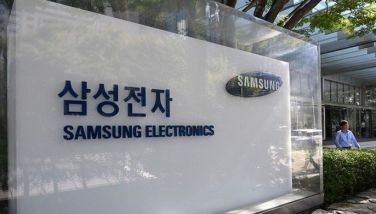Banking on eTechnology and Transparency
October 24, 2003 | 12:00am
Sourcepilipinas.Com Inc.
Most of us remember 1997-1998 when Asia’s financial system went into a quagmire, after the financial crisis and property bubble ruptured bullishness among investors. Real estate expansions either slowed or were curtailed, causing borrowers to falter in paying loan obligations. Worse, bank closures erased perceptions that one could sleep peacefully overnight, especially if hard-earned money was involved.
Amid this phenomenon, however, depositors learned a valuable lesson to stay vigilant at all times. In fact, monetary authorities hastened their efforts to rebuild the industry’s tarnished reputation, and realign the system toward a stable platform. Public trust is, after all, the core of the local financial system’s success, and is often ascribed as the pillar that re-magnetizes confidence.
Thanks to media and information technology, the public is now more aware of concepts behind non-performing loans (NPLs) and assets (NPAs), not to mention the legal aspects involved in DOSRI accounts. The enactment into law of the Corporate Governance Code and Anti-Money Laundering Act (AMLA) further tightened the noose, in the hope of effecting a transparent system. The next question – is transparency really at work in an environment challenged by the rapid evolution of e-Commerce? And given these challenges, can e-Commerce contribute to the reduction of the cost of doing business given the fiscal planners’ resolve to implement additional taxes?
Let us take a look at the banks’ basic income-cost structure. Banks earn from net margins they get between money lent and funds obtained from depositors. Those that offer sophisticated financial products derive fee-based income, to offset other operations-related charges. A higher possibility of non-collection of unsettled loans raises the risk, that’s why banks provide higher provision for probable loan losses, and higher provisions lower income subject to tax as a result. If VAT charges are imposed, the perception is that it would diminish the borrowers’ appetite to avail themselves of loans as pass-on charges make it heavier for them to pay back the debt.
Essentially, the call transcends how corporate leaders balance the other side of the scale involving investors’ earning expectations. As banks recognize the increasing need to effectively respond to customers’ diverse financial requirements and lower intermediation costs as a result, several if not all, have ventured into e-Commerce-related facilities.
The Philippine National Bank (PNB) heeded this challenge, along with its plan to realign efforts to regain premier status. Back in January this year, PNB joined Source—Pilipinas’ roster of active trading partners, which streamlined paperwork and enabled them to realize cost-savings. Productivity is enhanced as processes are in place to communicate necessary information among suppliers, giving the bank’s buyers more flexibility to assess and recommend appropriate contracts for operating requirements. Moreover, a supplier performance rating scale can be set, while ensuring that branches are able to operate without disruptions. Efficient documentation is in place, permitting management to see how negotiation processes are done online. This not only reduces clerical work, but empowers the management to focus more resources on strengthening finances and serving a broader clientele better.
More than this, the banks’ involvement in a public exchange would go a long way in helping liquidate their NPAs. There is no need to shell out massive investments by joining eMarketplaces like Source—Pilipinas, as the system allows market forces to work efficiently through lower cost of catalogue transactions, transparency in contract bids, better product functionality search and an infrastructure that helps bring down the banks’ financial intermediation charges. Overall, joining a one-stop shop public exchange is fast becoming a norm as the scheme allows better leeway for banks to improve net margins, without the burden of additional technology charges. By outsourcing the training and buyer search function, swifter asset disposal and adherence to rules are made possible.
Transparency need not be costly after all. Securing the right suppliers to reduce operating charges, and buyers for swifter disposal of assets is just a click away with SourcePilipinas’ exchange.
Joy C. Lim is a senior business development associate of SourcePilipinas.com handling government accounts, construction, telecoms, property, broadcasting, mining, organic chemicals and packaging. For comments or queries, e-mail her at [email protected].
In the Source-IT-Straight column last Sept. 26, author Maritel Mallo should have been described as a senior business development associate of Source—Pilipinas.com specializing in banking/finance, multinationals, non-alcoholic beverages, refined petroleum and fuel, automotive, logistics, inorganic chemicals and pharmaceuticals. For comments or queries, e-mail her at [email protected].
Most of us remember 1997-1998 when Asia’s financial system went into a quagmire, after the financial crisis and property bubble ruptured bullishness among investors. Real estate expansions either slowed or were curtailed, causing borrowers to falter in paying loan obligations. Worse, bank closures erased perceptions that one could sleep peacefully overnight, especially if hard-earned money was involved.
Amid this phenomenon, however, depositors learned a valuable lesson to stay vigilant at all times. In fact, monetary authorities hastened their efforts to rebuild the industry’s tarnished reputation, and realign the system toward a stable platform. Public trust is, after all, the core of the local financial system’s success, and is often ascribed as the pillar that re-magnetizes confidence.
Thanks to media and information technology, the public is now more aware of concepts behind non-performing loans (NPLs) and assets (NPAs), not to mention the legal aspects involved in DOSRI accounts. The enactment into law of the Corporate Governance Code and Anti-Money Laundering Act (AMLA) further tightened the noose, in the hope of effecting a transparent system. The next question – is transparency really at work in an environment challenged by the rapid evolution of e-Commerce? And given these challenges, can e-Commerce contribute to the reduction of the cost of doing business given the fiscal planners’ resolve to implement additional taxes?
Let us take a look at the banks’ basic income-cost structure. Banks earn from net margins they get between money lent and funds obtained from depositors. Those that offer sophisticated financial products derive fee-based income, to offset other operations-related charges. A higher possibility of non-collection of unsettled loans raises the risk, that’s why banks provide higher provision for probable loan losses, and higher provisions lower income subject to tax as a result. If VAT charges are imposed, the perception is that it would diminish the borrowers’ appetite to avail themselves of loans as pass-on charges make it heavier for them to pay back the debt.
Essentially, the call transcends how corporate leaders balance the other side of the scale involving investors’ earning expectations. As banks recognize the increasing need to effectively respond to customers’ diverse financial requirements and lower intermediation costs as a result, several if not all, have ventured into e-Commerce-related facilities.
The Philippine National Bank (PNB) heeded this challenge, along with its plan to realign efforts to regain premier status. Back in January this year, PNB joined Source—Pilipinas’ roster of active trading partners, which streamlined paperwork and enabled them to realize cost-savings. Productivity is enhanced as processes are in place to communicate necessary information among suppliers, giving the bank’s buyers more flexibility to assess and recommend appropriate contracts for operating requirements. Moreover, a supplier performance rating scale can be set, while ensuring that branches are able to operate without disruptions. Efficient documentation is in place, permitting management to see how negotiation processes are done online. This not only reduces clerical work, but empowers the management to focus more resources on strengthening finances and serving a broader clientele better.
More than this, the banks’ involvement in a public exchange would go a long way in helping liquidate their NPAs. There is no need to shell out massive investments by joining eMarketplaces like Source—Pilipinas, as the system allows market forces to work efficiently through lower cost of catalogue transactions, transparency in contract bids, better product functionality search and an infrastructure that helps bring down the banks’ financial intermediation charges. Overall, joining a one-stop shop public exchange is fast becoming a norm as the scheme allows better leeway for banks to improve net margins, without the burden of additional technology charges. By outsourcing the training and buyer search function, swifter asset disposal and adherence to rules are made possible.
Transparency need not be costly after all. Securing the right suppliers to reduce operating charges, and buyers for swifter disposal of assets is just a click away with SourcePilipinas’ exchange.
BrandSpace Articles
<
>
- Latest
Latest
Latest
Recommended
























